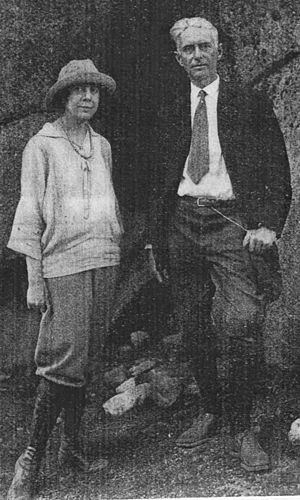Fannie Charles Dillon facts for kids
Fannie Charles Dillon (born March 16, 1881 – died February 21, 1947) was a talented American pianist, music educator, and composer. She was known for her unique musical style.
Early Life and Education
Fannie Charles Dillon was born in Denver, Colorado in 1881. When she was about nine years old, her family moved to Long Beach, California.
She loved music and studied hard. She learned how to compose music from famous teachers like Heinrich Urban, Hugo Kaun, and Rubin Goldmark. She also learned to play the piano from Leopold Godowsky in Berlin, Germany.
Career and Teaching
After finishing her studies, Fannie Dillon became a busy musician. She worked as a pianist, teacher, performer, and composer in Los Angeles.
She taught music at Pomona College from 1910 to 1913. Later, she taught in the Los Angeles high school system for many years, from 1918 to 1941. One of her students at Los Angeles High School was the famous future composer John Cage.
Fannie Dillon also started the Woodland Theater in Fawnskin, California, near Big Bear Lake. This was in 1924. She helped manage the theater from 1926 to 1929. She passed away in Altadena, California. Her important papers are kept at the UCLA library.
Unique Compositions
As a composer, Fannie Dillon was very creative. She was especially known for using bird calls in her music. She would listen to birds and then put their sounds into her musical pieces.
She wrote music for many different things. This included pieces for the piano, songs for singers (voice), music for orchestras, and music for small groups of instruments (chamber ensembles). She also wrote music for outdoor plays called dramas.
Selected Works
Here are some of her well-known compositions:
- Nevertheless--Old Glory (a drama)
- The desert calls (a drama)
- Tahquitz (a drama, about the spirit Tahquitz)
- Celebration of Victory (for orchestra)
- The Cloud (for orchestra)
- Woodland Flute Call (for organ)
- A Letter from the Southland: Mission Garden
- The Alps
- Chinese Symphonic Suite


